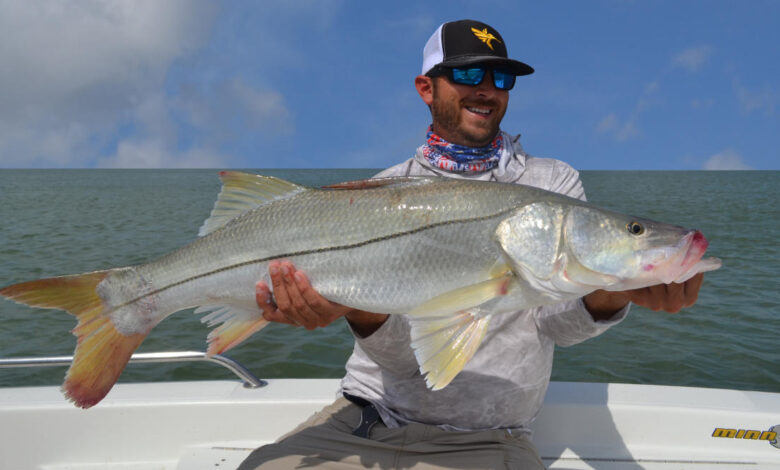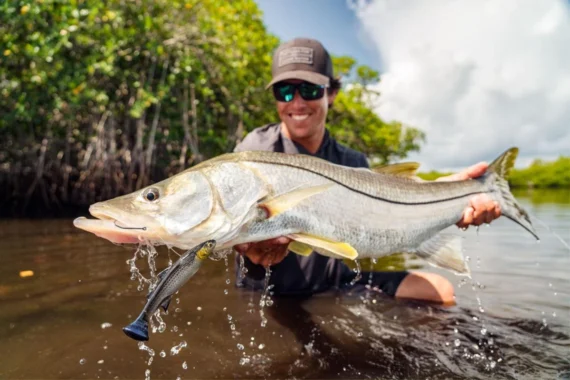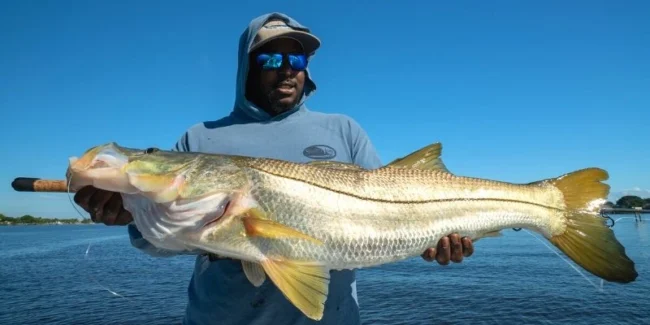All About Snook: The Fascinating Fish

Snook is a popular fish found in warm waters along the coasts of the Americas. Known for their unique appearance and delicious taste, snook are a favorite among anglers and seafood lovers alike. These fish are characterized by their long, slender bodies and a distinctive black line that runs along their sides. They are primarily found in brackish waters, such as estuaries, mangroves, and inshore areas. The most common species of snook is the common snook (Centropomis undecimalis), which is found from Florida down to Brazil.
Snook are known for their fighting ability, making them a prized catch for sport fishermen. They are typically caught using light tackle and lures, which can make for an exciting fishing experience. In addition to their sporting appeal, snook are also important to local economies, particularly in areas where fishing is a significant part of the culture. As we explore the world of snook, we will discuss their habitat, behavior, fishing techniques, and conservation efforts.
Habitat and Distribution
Where Snook Live
Snook thrive in warm, shallow waters where they can find food and shelter. They are commonly found in estuaries, tidal rivers, and coastal waters. Their preferred habitat includes mangroves, seagrass beds, and coral reefs. These environments provide the perfect conditions for snook to grow and reproduce. They are particularly abundant in Florida, where anglers flock to catch them during the fishing season.
Migration Patterns
Snook are known to migrate in response to temperature changes and spawning cycles. During the warmer months, they tend to move into shallower waters, while in cooler months, they seek deeper areas to stay warm. Understanding their migration patterns is crucial for anglers hoping to catch them during their peak activity periods.
Behavior and Diet
Feeding Habits
Snook are carnivorous and have a diverse diet. They primarily feed on smaller fish, crustaceans, and various invertebrates. Their diet can vary depending on their size and the availability of prey in their environment. Juvenile snook often feed on shrimp and small fish, while adult snook may target larger prey. This adaptability in diet allows them to thrive in different habitats.
Hunting Techniques
Snook are ambush predators, which means they rely on stealth to catch their prey. They often hide in vegetation or structure and wait for the right moment to strike. This hunting technique makes them challenging to catch, as they can quickly retreat into cover when threatened. Anglers must use a variety of fishing techniques, including topwater lures, jigs, and live bait, to successfully entice snook.

Fishing Techniques
Best Times to Fish
The best time to fish for snook varies depending on the season and location. Generally, early mornings and late evenings are considered the most productive times. During these times, snook are more active and feeding near the surface. Additionally, fishing during tidal movements can increase your chances of a successful catch. Snook are known to be more active during incoming tides, as they move into shallower waters to hunt for food.
Equipment and Techniques
When fishing for snook, having the right equipment is essential. Anglers typically use medium to heavy spinning gear with a strong line to handle the powerful strikes of snook. Common lures include swimbaits, topwater plugs, and soft plastics. Live bait, such as mullet or shrimp, is also effective. It’s important to present your bait naturally and to be patient, as snook can be picky eaters.
Conservation Efforts
The Importance of Conservation
Conservation efforts are vital to ensuring the sustainability of snook populations. Overfishing, habitat loss, and environmental changes pose significant threats to their survival. Many regions have implemented regulations, such as size and bag limits, to help protect snook. Educating the public about responsible fishing practices is also an important part of conservation efforts.
Community Involvement
Local communities play a crucial role in conservation initiatives. Many organizations and fishing clubs work together to promote sustainable fishing practices and habitat restoration projects. Community involvement helps raise awareness about the importance of preserving snook habitats and the overall health of marine ecosystems.
Conclusion
In conclusion, snook are fascinating fish that hold a special place in the hearts of anglers and seafood enthusiasts alike. Their unique behaviors, impressive fighting skills, and delicious taste make them a prized catch in coastal waters. By understanding their habitats, feeding habits, and conservation needs, we can ensure that future generations will enjoy fishing for snook.
Protecting snook populations is not just the responsibility of anglers; it requires the collective effort of communities, organizations, and individuals. By promoting sustainable fishing practices and habitat conservation, we can help secure a future where snook continue to thrive in our waters. So whether you’re an avid angler or simply enjoy seafood, snook deserves our attention and respect.

FAQs
Q: What do snook eat?
A: Snook primarily feed on smaller fish, crustaceans, and invertebrates, adapting their diet based on size and availability.
Q: Where can I find snook?
A: Snook are typically found in warm, shallow waters like estuaries, mangroves, and coral reefs, mainly along the coasts of Florida and Brazil.
Q: What is the best time to catch snook?
A: Early mornings and late evenings are the best times to fish for snook, particularly during tidal movements.
Q: What equipment is needed for snook fishing?
A: Anglers should use medium to heavy spinning gear with strong lines and lures such as swimbaits, topwater plugs, or live bait like mullet and shrimp.
Q: Why is snook conservation important?
A: Snook conservation is vital to maintaining healthy populations and ecosystems, as overfishing and habitat loss threaten their survival.



